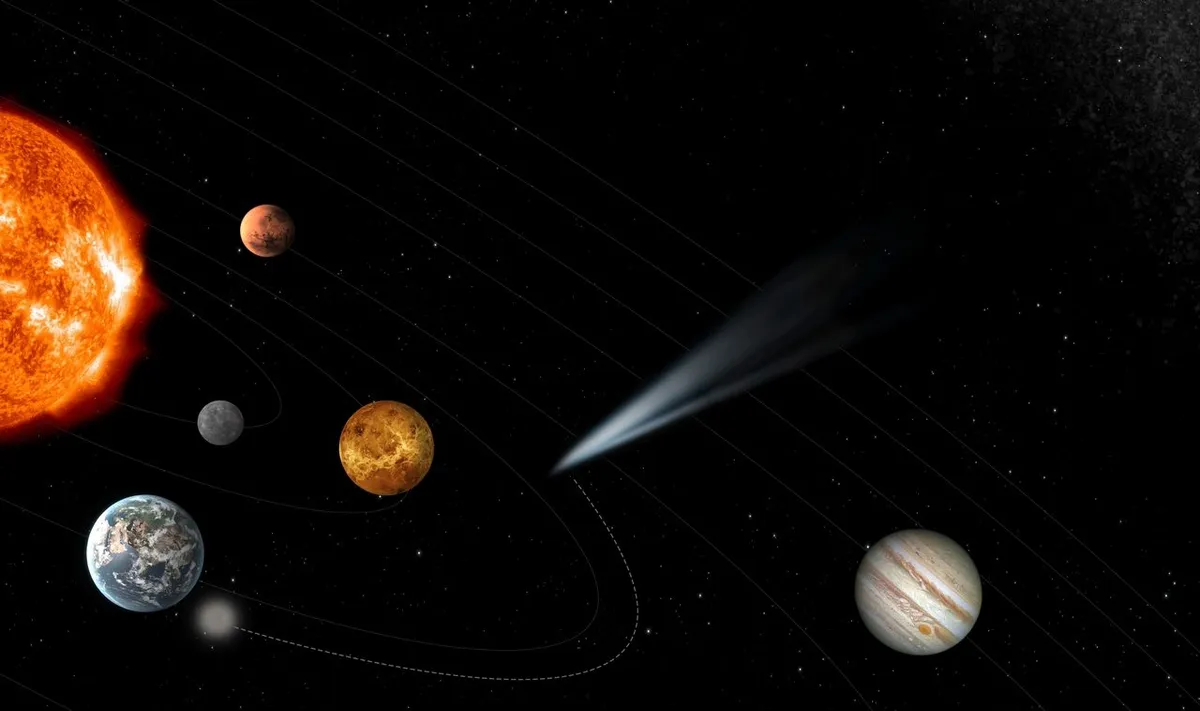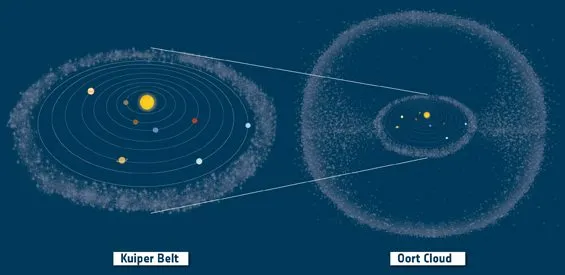The European Space Agency has announced a new UK-led mission to visit a comet on the edge of the Solar System.
Building on the legacy of the Giotto and Rosetta missions, 'Comet Interceptor' aims to intercept and study a comet as it enters the inner Solar System.
The primordial as-yet-undiscovered object will have never been affected by the radiation from our Sun, giving scientists a unique insight into the early Solar System and its formation.
A proposal for the mission is being examined by the European Space Agency, but if it is approved, Comet Interceptor will be comprised of three separate spacecraft, with a planned launch date of 2028.

Classified as a fast mission with regards to its implementation time, the project is estimated to take eight years, from development to launch.
ESA says ideas and technology from previous missions are helping to speed up the development process.
There will be a camera on-board that is based on the one currently in use on the ExoMars Trace Gas Orbiter, as well as dust, fields and plasma instruments, and a mass spectrometer similar to the ones that once flew on ESA’s Rosetta spacecraft.
As the whole payload is planned to weigh less than 1000kg it will be able to “piggyback” a launch with another UK-led mission, the ARIEL (Atmospheric Remote-sensing Infrared Exoplanet) space telescope.
Pristine or dynamically new comets are entirely uncharted and make compelling targets for close-range spacecraft exploration to better understand the diversity and evolution of comets.
Günther Hasinger, ESA’s Director of Science.
Both missions are planned to be delivered to L2, a region in space 1.5 million km away from Earth in the opposite direction of the Sun.
It is here that the comet interceptor will bid farewell to ARIEL, park up and wait for an approaching object of interest.
It is unlikely the comet interceptor will find something straight the way but scientists have estimated that the mission will be complete within five years of launch.
Once a suitable target has been obtained - perhaps an incoming object from the Oort cloud - the comet interceptor will deploy two spacecraft down to the surface of the comet whilst the mothership will observe at a distance.

The spacecraft will measure features such as the structure, surface materials as well as what gases are being released from the comet.
These observations of a pristine comet could help us understand the formation, diversity and evolution of comets as well as an insight into the early Solar System.